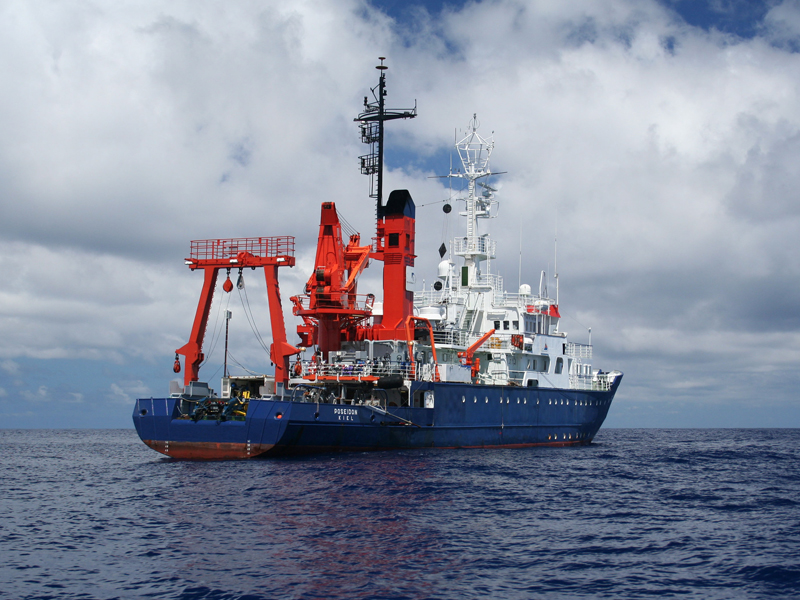POSEIDON POS522
- Area:
- Tyrrhenian Sea
- Time:
-
10.04.2018 - 29.04.2018
- Institution:
- GEOMAR
- Chief scientist:
- Armin Freundt
Stromboli volcano in the Aeolian archipelago is word famous for its continuous volcanic activity throughout historic times. It is less well known as a source of tsunamis that threaten coasts around the Tyrrhenian Sea, and are generated by flank collapses. The last tsunami occurred in 2002, five such events occurred during the last century, and at least four major collapses occurred over the past 13 ka. Useful landslide and tsunami hazard assessment requires a record of past ages, frequencies, mechanisms and magnitudes of collapse events. We will determine that record by sampling sediment profiles on the seafloor north of Stromboli where the distal turbidites of proximal landslide masses have been deposited. Next to the stratigraphic succession, we aim to observe lateral facies variations by an array of drill cores because these are particularly indicative of the dynamic processes. Three seamount complexes exist near Stromboli with bathymetric indication for collapse structures but otherwise practically unknown (only 2 dredge samples so far). We will use shipboard bathymetric mapping and water (CTD) and rock (dedge) sampling to characterize collapse structures and magmatic composition, and search for hydrothermal signs of volcanic activity.



